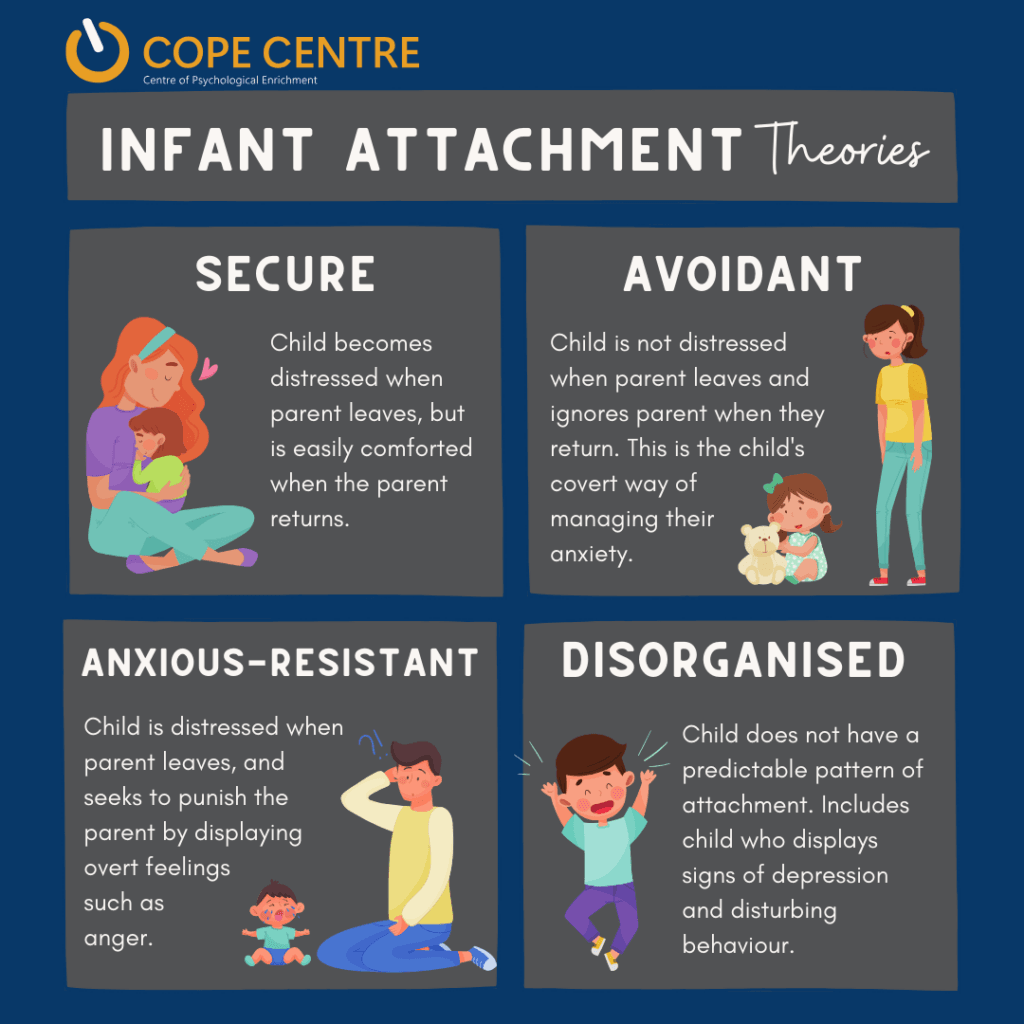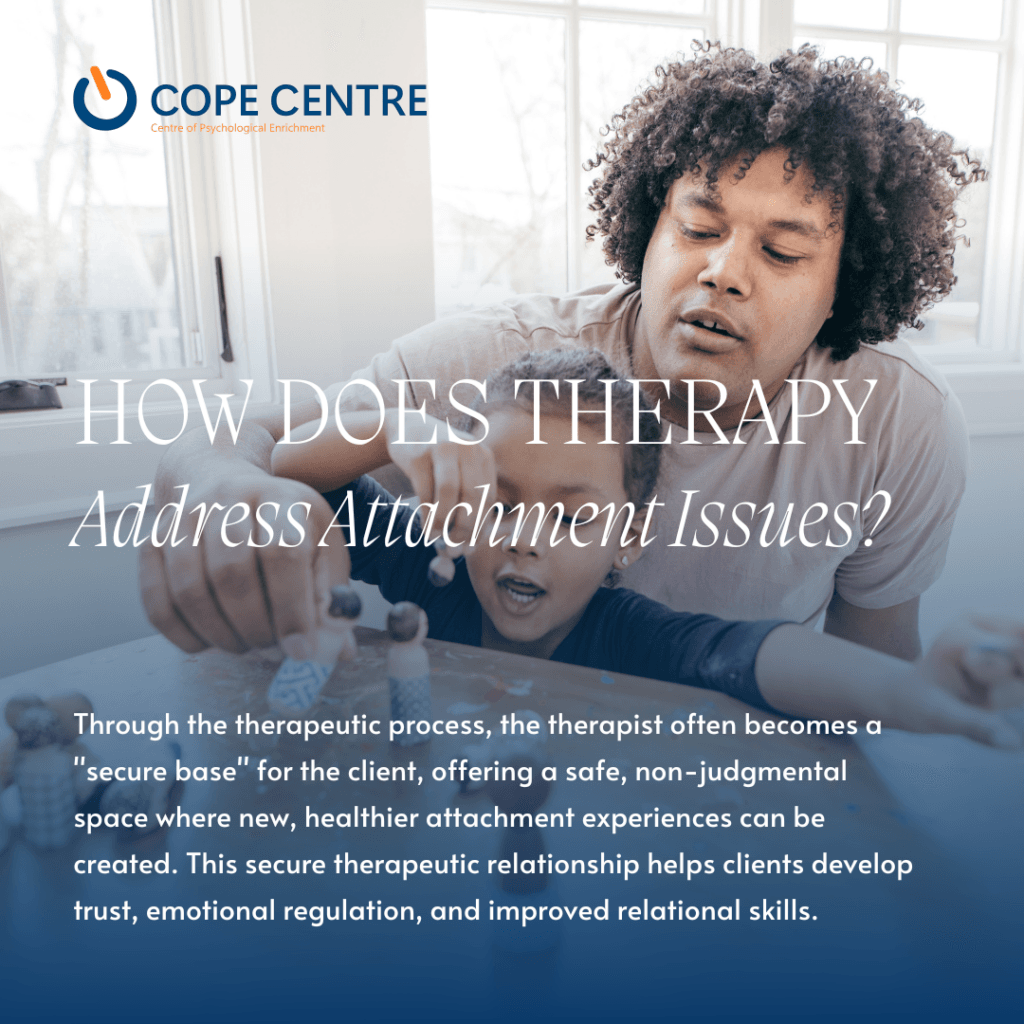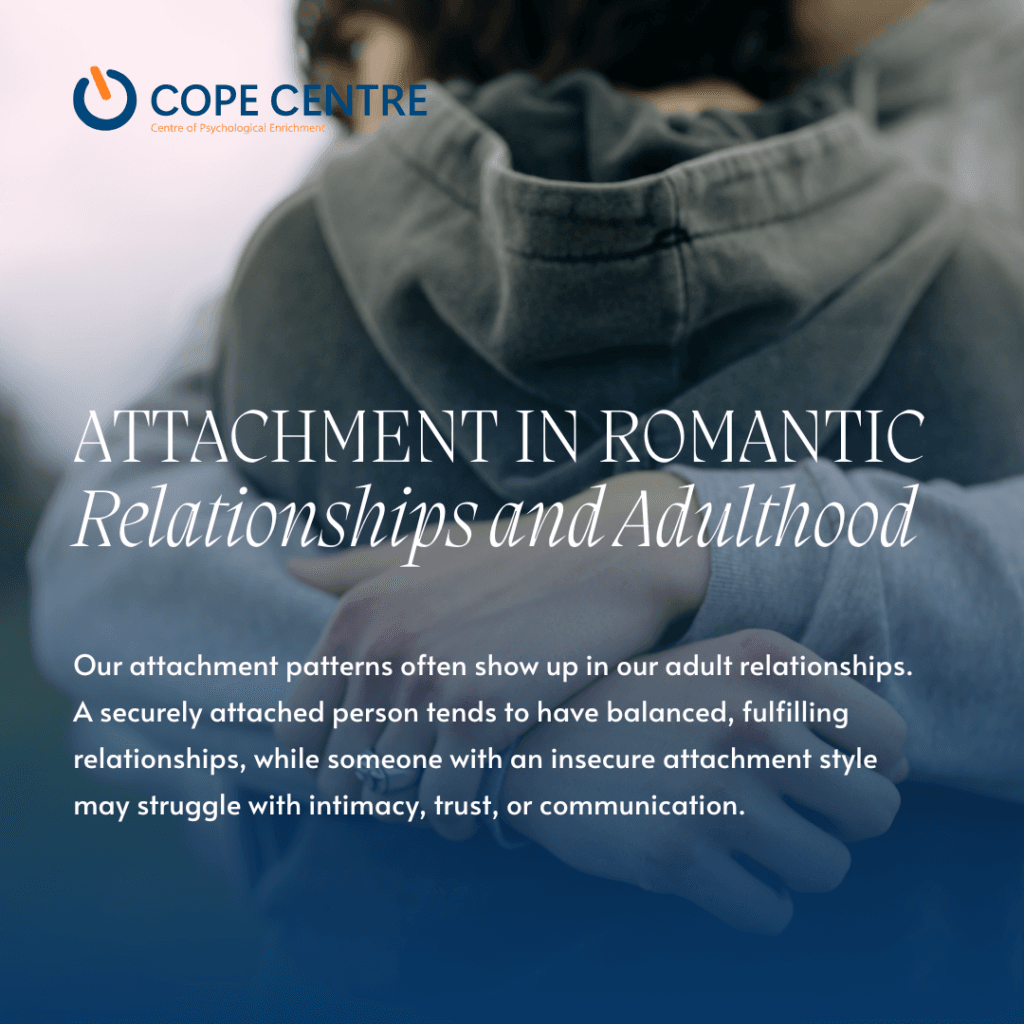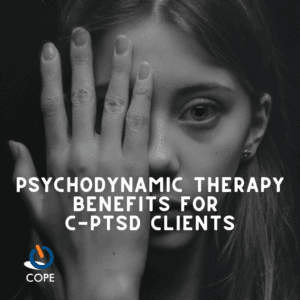Attachment is a word often used when talking about relationships, but what does it really mean? As a psychologist, I frequently help people understand how their earliest relationships—particularly with their primary caregivers—shape the way they experience themselves, manage emotions, and connect with others throughout life.
What is Attachment?
Attachment refers to the deep emotional bond that forms between an infant and their primary caregiver, typically within the first few years of life. This bond, whether secure or insecure, acts as a blueprint for how the individual will relate to themselves and others as they grow. It’s an internal “working model” that informs how we view relationships, process emotions, and handle stress.
The attachment bond is created through the interaction between a baby’s natural development and their caregiver’s behavior. Over time, these interactions solidify into either a secure attachment, where the child feels safe and supported, or an insecure attachment, where the child might feel anxious, uncertain, or disconnected.

Why Does Attachment Matter?
Research shows that the strength and security of our early attachments can have a profound impact on our emotional well-being, self-esteem, and relationships as adults. For instance, those with secure attachments tend to have better emotional regulation, healthier relationships, and a stronger sense of self. In contrast, insecure attachments can lead to difficulties in managing emotions, maintaining close relationships, and even contribute to anxiety or depression.
A secure attachment means that, as a child, you learned that your needs would be met consistently. You learned to trust your caregivers, and this helps develop a sense of safety and trust in relationships throughout life. On the other hand, insecure attachment often develops when caregivers are unavailable, inconsistent, or neglectful. This can result in feelings of mistrust, anxiety in relationships, and difficulty managing emotions.
The Different Types of Attachments
Psychologists identify four main attachment styles:
1. Secure Attachment: A securely attached individual generally has positive views of themselves and others. They find it easy to trust others and build meaningful relationships.
2. Anxious-Preoccupied Attachment: This style is marked by a deep fear of abandonment. Individuals with this attachment style may feel insecure in relationships, crave closeness, but also be afraid of rejection.
3. Dismissive-Avoidant Attachment: People with this style may avoid emotional closeness, often feeling uncomfortable with intimacy. They may seem emotionally distant or self-reliant, but underneath may be an avoidance of vulnerability.
4. Fearful-Avoidant (Disorganised) Attachment: This style is a blend of anxious and avoidant behaviors. Individuals may want close relationships but struggle to trust others, often feeling torn between fear of intimacy and fear of being alone.


How Does Therapy Address Attachment Issues?
One of the goals of therapy, particularly developmentally informed treatments, is to help adults rework the internal representations of these early bonds. In simpler terms, if someone grew up with insecure attachments, therapy can help them “relearn” how to form healthy, secure relationships. This isn’t just about understanding what happened in childhood—therapy provides practical tools to reshape how we relate to ourselves and others now.
For example, psychodynamic therapy or attachment-based therapy focuses on bringing unconscious patterns to light. These therapies help people become aware of their attachment style and how it plays out in their relationships. A therapist may explore past relationships to help identify how early attachment experiences are affecting current relationship patterns.
Through this therapeutic process, the therapist often becomes a “secure base” for the client, offering a safe, non-judgmental space where new, healthier attachment experiences can be created. This secure therapeutic relationship helps clients develop trust, emotional regulation, and improved relational skills.
The Phases of Attachment
Attachment doesn’t develop overnight. It unfolds in phases, starting from birth. In the pre-attachment phase (birth to 2-3 months), babies use instinctive behaviors—like crying, smiling, or grasping—to attract the attention of caregivers. These behaviors are essential for survival, helping ensure that the infant’s basic needs are met.
By about 3 to 6 months, babies begin to recognize their caregivers and form stronger emotional connections. This is called the attachment-in-the-making phase. The more a caregiver responds consistently and lovingly, the stronger the bond becomes.
By around 6 to 9 months, the attachment becomes clearer, and the child seeks proximity to their caregiver, particularly in stressful situations. This is the clear-cut attachment phase, where the child’s sense of safety is deeply tied to the caregiver’s presence and behavior.
Attachment Beyond Childhood
While the attachment bond is well established by the age of 3, our attachment patterns continue to evolve as we mature, and they can be influenced by later experiences. Our relationships as teenagers and adults—whether with friends, romantic partners, or therapists—can either reinforce or challenge the attachment models we developed in childhood.
In therapy, we often work with these attachment models, helping individuals recognise patterns in their relationships and learn new ways of connecting that promote security and trust.
Rewriting the Attachment Story
The good news is that it’s never too late to reshape an insecure attachment into a more secure one. Therapeutic methods—especially those rooted in psychodynamic and attachment theory—help individuals recognize and heal the patterns that no longer serve them. By creating a trusting, secure environment, therapy can serve as a corrective emotional experience, allowing people to build healthier, more fulfilling relationships.
For example, someone with an avoidant attachment style might learn how to gradually let others in, while someone with an anxious attachment style may learn how to feel secure in relationships without needing constant reassurance. This process takes time, but with consistent work in therapy, meaningful change is possible.

How Therapy Heals Attachment Wounds
Therapy helps by creating a space for individuals to experience emotional attunement and understanding, sometimes for the first time. This experience helps them internalize what it feels like to be cared for, listened to, and accepted unconditionally. Over time, these therapeutic experiences contribute to a reshaping of their internal models of attachment, enabling healthier, more secure patterns in their relationships outside the therapy room.
The therapist acts as a secure figure, helping individuals to regulate emotions, process past hurts, and make sense of relationship struggles. This, in turn, fosters trust and emotional growth.

Attachment in Romantic Relationships and Adulthood
Our attachment patterns often show up in our adult relationships. A securely attached person tends to have balanced, fulfilling relationships, while someone with an insecure attachment style may struggle with intimacy, trust, or communication. By addressing attachment issues in therapy, individuals can improve not only their relationship with themselves but also their connections with others, whether in friendships, family dynamics, or romantic partnerships.
In short, attachment is at the heart of who we are and how we connect with the world. Understanding it—and healing any disturbances in that attachment—can transform how we feel about ourselves and how we relate to those around us.
How Can Therapy Help You?
If you’re curious about how your early experiences might be influencing your current relationships or emotional life, therapy is a great place to start that exploration. At COPE, we offer a variety of therapeutic approaches tailored to help individuals heal from attachment wounds and build stronger, more secure relationships. No matter where you are in your journey, it’s never too late to create a more secure and fulfilling emotional life.
If you’re ready to explore how your early attachments might be impacting your life today, we’re here to help.
From Michiel Gonzales
COPE Centre of Psychological Enrichment
Visit us at 2 Lawrence Avenue, West Perth
📞 (08) 6556 6460
📧 [email protected]
3 July 2025
No Comments
Read More »

14 May 2025
No Comments
Read More »

5 March 2025
No Comments
Read More »